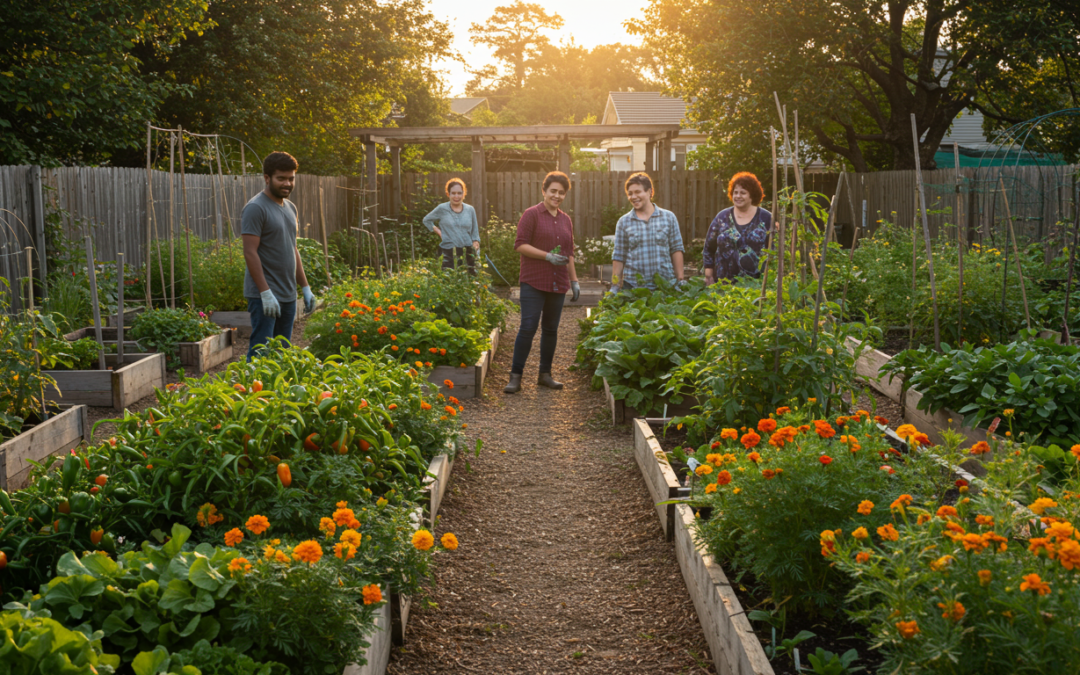10 Essential Steps to Launch a Thriving Community Garden
Launching a thriving community garden requires careful planning and community engagement. Here are the 10 essential steps:
Organize an Initial Meeting
Determine the community’s need and interest in a garden. Discuss the type of garden (vegetable, flower, organic) and identify potential participants and beneficiaries [3][4].
Form a Planning Committee
Recruit 3-5 committed individuals with time and energy to devote to the garden’s creation. Assign specific roles like funding, partnerships, youth activities, and communication [3][4][7].
Assess Community Resources
Conduct a community asset assessment to identify existing skills, resources, and potential support. Contact local municipal planners, horticultural societies, and community organizations [3][4].
Secure Sponsorship
Seek financial support from churches, schools, businesses, or parks departments. While some gardens can be self-supporting through membership dues, sponsorship can provide crucial resources like tools, seeds, and funding [3][4][6].
Select an Appropriate Site
Choose a location with at least six hours of daily sunlight and access to water. Conduct soil testing for potential pollutants. Ensure you can secure a lease agreement for at least three years [3][4][6].
Prepare and Develop the Site
Organize volunteer work crews to clean the area, gather materials, and design the garden layout. Consider accessibility, plot arrangements, and potential challenges like slope or soil quality [3][4][6].
Organize Garden Structure
Determine the number of plots, allocation methods, and essential infrastructure, such as tool storage, composting areas, and pathways. To promote goodwill, consider adding flowers or shrubs around the garden’s edges [3][4].
Plan for Inclusive Participation
Create special areas for children and ensure the garden is accessible to people of all abilities. Consider raised beds and engaging activities that make gardening enjoyable for everyone [3][4].
Establish Clear Rules
Collaboratively develop written ground rules with garden members. Address key issues such as membership dues, plot assignments, tool sharing, maintenance responsibilities, and expected behavior [3][4].
Maintain Communication
Create systems for ongoing communication, such as email lists, phone trees, bulletin boards, and regular meetings or celebrations. Strong communication ensures active participation and community building [3][4][7].
Following these steps can help create a vibrant, sustainable community garden that produces fresh food, strengthens community bonds, and promotes environmental sustainability.
Visit Our Gardens
- Carolina Street Greenspace
- Good Prospect Community Garden
- Ogden Avenue Gardens
- Tompkins Stairway Garde
Citations:
[1] https://www.arkaenergy.com/learn/community-gardening
[2] https://productiveparks.com/developing-and-maintaining-community-garden
[3] https://www.carolinacountry.com/carolina-gardens/carolina-gardens/2018-gardens-guide/10-steps-to-starting-a-community-garden
[4] https://www.portland.gov/parks/community-gardens/documents/10-steps-start-community-garden/download
[5] https://www.reddit.com/r/gardening/comments/xtlzkm/i_just_got_my_first_community_garden_plot_what/
[6] https://greenabilitymagazine.com/10-practical-steps-to-help-you-start-a-community-garden/
[7] https://createthegood.aarp.org/volunteer-guides/community-garden.html
[8] https://www.npr.org/sections/thesalt/2017/08/17/543421360/how-my-little-community-garden-plot-went-from-flop-to-flourish
[9] https://www.reddit.com/r/vegetablegardening/comments/10q5lz1/how_do_i_start_a_community_garden/
[10] https://letsmove.obamawhitehouse.archives.gov/community-garden-checklist

